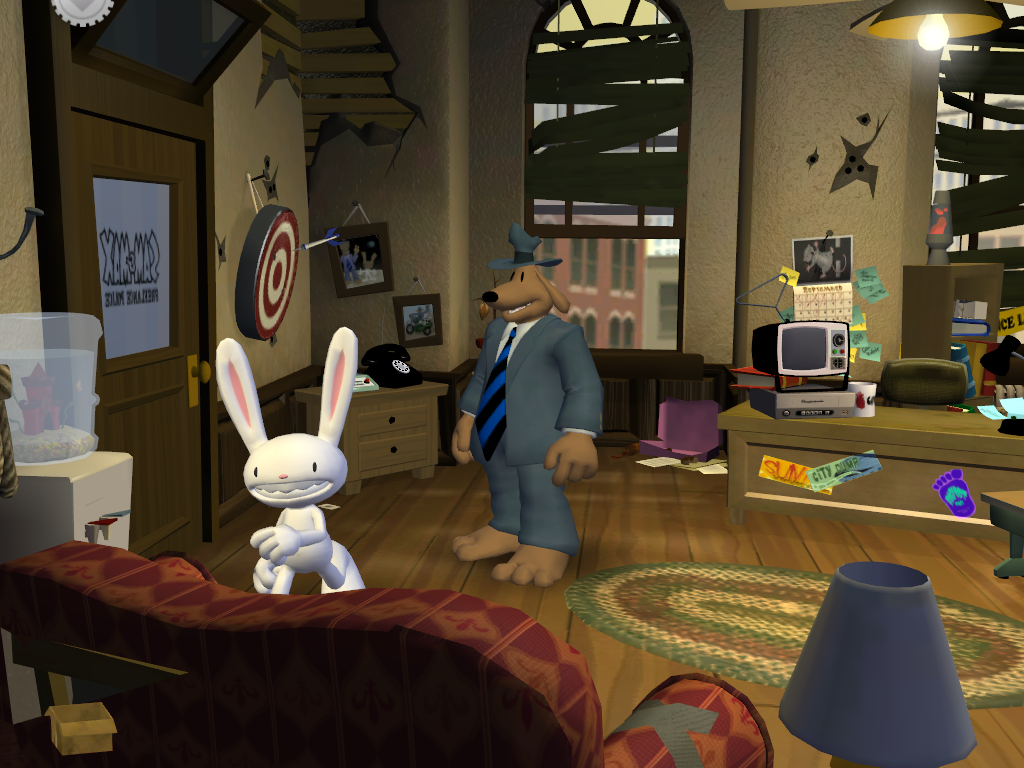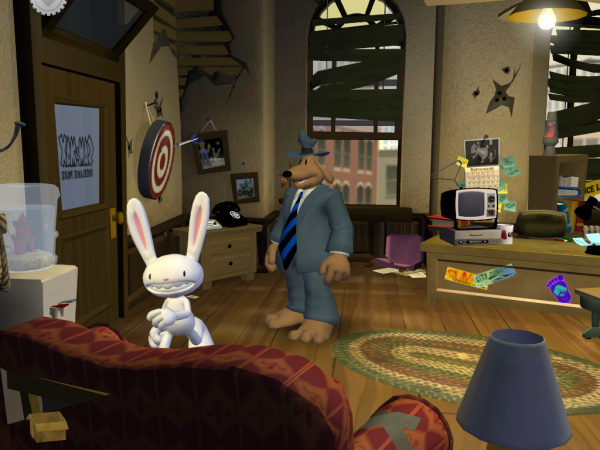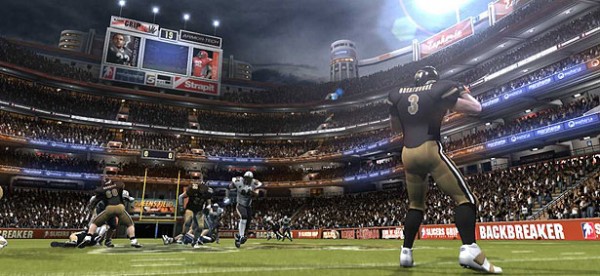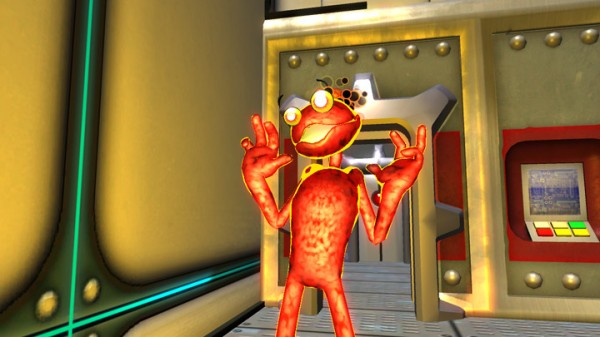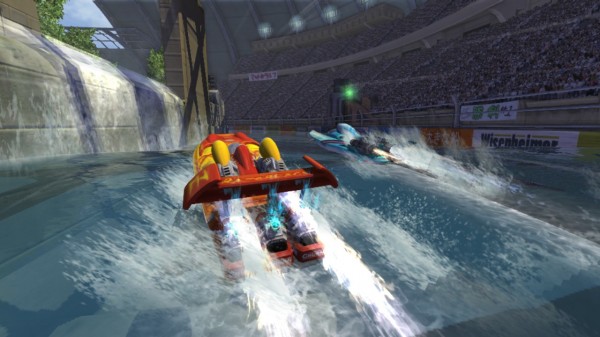Xbox Live Arcade pricing: Does it need an overhaul?
These days it seems all I hear are constant complaints about pricing for Xbox Live Arcade games. It’s always too expensive. We’ve all done it — looked at a game and said “I like it, but not for 1200 MSP!” Maybe it’s the recession we’re in, maybe it’s because we just don’t have extra points to spend, and maybe we’re just stingy. Still, maybe we’re right. But here’s the thing: maybe developers and publishers are right sometimes too. So where’s the middle? Where is that happy hunting ground where companies can make a profit and players can get the escapes they want at the price they’re willing to pay?
Perceived overpricing: fault of the consumer?
The Sam & Max games (pictured above) have both been 1600 MSP. That’s the highest price for any Xbox Live Arcade game to date, and there are only four titles currently at that price. But is that too much to ask for the game? Well, the short answer is that everyone has to make that decision for themselves, but the technical answer is no. Here’s why: they’re cheaper than any other port of the game. The Steam version is 29.99 USD (or 2400 MSP), and from what I could find the Wii retail version is even more. So for all intents and purposes these games should have done well, yet Gamasutra reports that as of the end of last year that they only sold around 37,000 copies collectively. The worst part? They’ve been on the marketplace for quite a while.
Now, maybe that’s because adventure games aren’t as mainstream as they used to be, but I don’t think so. I honestly think it’s a matter of thinking that since it holds the highest price on the marketplace that it just isn’t worth the money. It’s tossed to the side before people think of the value that the game brings. I suppose that’s fair to a certain extent. After all, they’re your points to spend. But if you’re interested in a game take some time to look at what the critics say, what other games like it are going for, and if it’s going for more or less on another platform before throwing it out the window. A lot of people are missing out on two “seasons” of Sam & Max because they think it’s too expensive when technically speaking it isn’t.
The price hike: are developers a bit too proud of their games?
I’ve heard the argument before that developers chose to overprice their games because they’re either crazy or just too proud of them. You know what? I totally agree. I’ll give you a perfect and recent example, Backbreaker: Vengeance. When we got the tip that this game was going for a whopping 1200 MSP my jaw hit the floor. Hard. The original game was released on consoles for 50 USD last year (or in MSP terms, 4000). Shortly thereafter the minigame Backbreaker: Tackle Alley was released to mobile platforms for just 1 dollar. That’s 80 MSP folks. So with Vengeance being a slightly more robust Tackle Alley with the already existing visuals from the console game how can they possibly charge 15 times the cost of the mobile version? Now to be fair to NaturalMotion and 505 Games, we haven’t played it yet, but unless they have at least five times the content (we’ll give them a few points for this being in HD) it’s not worth the cost.
Another recent, yet-to-be-played example is Radiant Silvergun. Now in a recent podcast (can’t remember which one) our Community Manager and podcast Co-Host Andrew Crews thought the price was just too high. Another podcast member rebutted with the fact that the team spent six months just on getting the core Silvergun engine working perfectly on the 360. To that I say “so what” to the developers. Why should I have to pay extra just because it took you longer than expected to get it up to speed? I mean, yeah there’s supposedly new HD visuals coming with the game, but you know what you’re actually paying for? The name. As a shoot em’ up (commonly known as a shmup) goes it’s a household one. Every shmup fan knows Radiant Silvergun, and they’re counting on a major bankroll because of it.
The numbers don’t lie
Developers, Publishers and distributors: There will always be complainers, whiners, and stiffs when it comes to the price of a game. But you know what? If you set a price and consumers just aren’t biting after six months or so it’s probably too high. Gamasutra posts monthly and yearly sales data calculated from the Xbox Live Arcade leaderboards, so it’s easy to follow almost any game in comparison to its competition. It makes it much easier to see whether a particular game is stacking up well against its competition; price is a major factor in that respect. If it’s just not selling well at the current price you have to take a look and see what cutting 400 MSP will do. Can you make money from the new price? Will the price cut really increase sales?
Consumers: Before dismissing a game at a particular price be sure to do your homework. If you played the trial version and liked it but felt it was too expensive then ask your friends what they think. Look up what the critics say. Check out how much content the game actually offers to you. Find out how it fares price-wise to its cost on other platforms. Mull it over and make a decision. Maybe it’s worth the cost, maybe it’s worth waiting for a sale, or maybe it’s not worth anything at all to you.
So does it need an overhaul?
Absolutely, on both sides. Consumers need to not immediately dismiss a game simply for the price, as the more expensive 1200 and 1600 MSP games often have a whole lot to offer. Players should do research when they like a demo. Check with friends, check the critics’ scores, see what the full game offers. On the other hand those working on the games need to be realistic in their pricing. They need to respect what consumers are willing to pay for and work within that window. In these delicate times it all has to meet in the middle. Whatever a game’s price on Xbox Live Arcade it’s going to be scrutinized against its competition both in and out of that particular genre. Only the games that meet both the fun and value factors will come out on top, while the rest will fade into obscurity.

